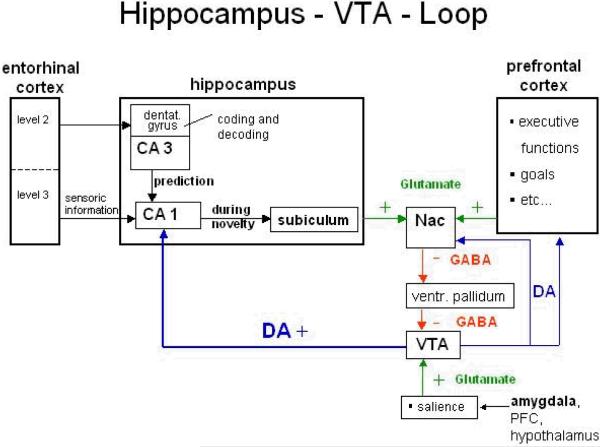FIGURE 3.
Model of a neuronal network that includes dopamine-related prediction of unexpected or novel reward and reward-associated stimuli: the discrepancy between expected and actual sensory informations is calculated in the hippocampus (CA1) and activates dopaminergic neurons in the brainsteam (VTA) via glutamatergic projections to the nucleus accumbens (ventral striatum). The VTA in turn modulates neuronal transmission in CA1 via an increased dopamine-release in the hippocampus and thus contributes to memory performance. The prefrontal cortex contributes to executive control functions and modulates - just as the limbic system - the firing rate of dopaminergic neurons that project from the brainsteam (VTA) to the nucleus accumbens (modified referring to Lisman and Grace, 2005).

